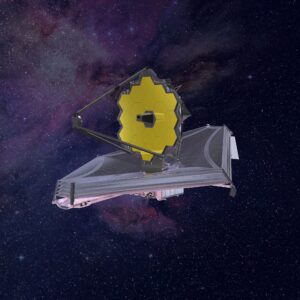
Artistic concept of the James Webb Space Telescope. Credit: NASA
An international team of astronomers, led by the University of Chicago, has identified a new metal-poor star in the halo of the Milky Way. The discovery was made possible with the help of data from the Gaia satellite and the 6.5-meter Magellan Clay telescope, installed at the Las Campanas Observatory in Chile, whose resolving power confirmed the unique properties of this object.
The star, designated GDR3_526285, was initially detected through data from the Gaia satellite and later confirmed by detailed observations at Las Campanas. It is located about 78,600 light-years from Earth and has one of the lowest metallicities ever measured. This means that it contains very few heavy elements and is made almost exclusively of hydrogen and helium. This indicates that it is very old, because it formed at a time in the universe when there had not yet been many supernovae to enrich the gas with new elements. Unlike other stars of similar composition, it does not have a marked excess of carbon, making it a particularly unique case for astronomers.
Researchers suggest that GDR3_526285 may have formed from gas cooled by dust in the early universe and propose that it could be linked to the Magellanic Clouds system. It is possible that it is a star torn from the Large Magellanic Cloud or that it has been influenced by recent dynamic interactions, which would explain its current location in the galactic halo.
The discovery highlights the importance of the Magellan Clay telescope at Las Campanas Observatory, which was used to make high-resolution spectroscopic observations that confirmed the low metallicity of this star.
This finding not only expands the catalog of known ultra-metal-poor stars, but also opens new windows into the study of the origin of the universe, reaffirming the leadership of Chilean and international astronomy in the exploration of the far reaches of the cosmos.
Scientific publication
The study is G. Limberg, V. Placco, A. Ji et al; “Discovery of an [Fe/H] ∼ −4.8 Star in Gaia XP Spectra.” Published in The Astrophysical Journal Letters on August 8, 2025. It can be accessed at this link.
